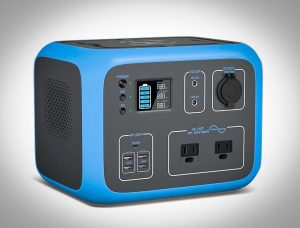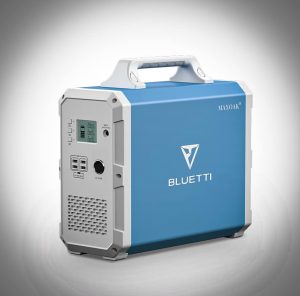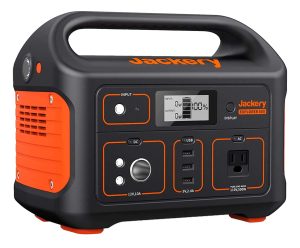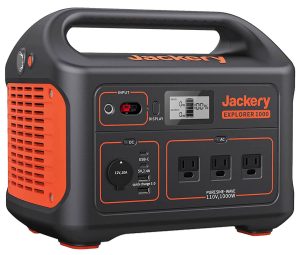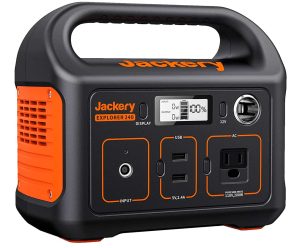– At A Glance –
Eco-friendly clean indoor and outdoor power
Bear in mind that portable power stations are no substitute for portable generators. The main difference lies in a portable generator’s ability to generate power, which a portable power station cannot do. But because both devices provide you with varying amounts of independent power there is some overlap in their utility in specific circumstances.
The advantages of a power station like this Anker model include clean power, safe usage, and in general they are much more portable due to their light weight. On the other hand, portable generators actually generate their power using a fuel, be it gasoline, LPG, or diesel, and they can output far more power than a power station. However, one downside is that in the process of combustion needed to generate power they produce the toxic carbon monoxide gas. This limits their use to the open air, and well away for people.
Additionally, in the case of power stations there is no need for you to plan on how to store fuel safely, or about gas going bad and gumming up a carburetor, which is often a problem associated with gas-powered portable generators, though this can often be mitigated using a fuel stabilizer.
People, for example, living in apartments may be limited to having a power station, such as this Anker Model 545, to give them some assurance that in the event of an emergency or blackout they will be able to keep some basic essentials powered up. And the growing number of people who work from home will greatly benefit from having an additional source of power just in case grid power fails.
Anker provide buyers with many of the usual and immediately essential accessories to power and use this model. Unfortunately, the Welcome Guide (see below) is a bit of a disappointment in that it is thin on detail. Buyers may well expect to have access to more comprehensive information rather than what some might consider to be a confusing multi-language leaflet. Just one example is the absence of any detailed information about how to properly connect and use a solar panel.
a full 500W of continuous power
The PowerHouse II 800 (also known as the Model 545), introduced in 2021, is a fairly powerful and versatile device with a rated capacity of 778Wh and a maximum output of 500W from either of its 2 AC outlets. Bear in mind that does not mean you can use each of the AC outlet to power devices up to 500W; when using both of the AC outlets at the same time you must not exceed a TOTAL of 500W.
Anker has designed a durable exterior that comes with reinforced corners, so you can be confident in knowing that it can better withstand the rough and tumble of outdoor life.
This is a very popular power station from a well-respected brand that is recognized for making quality products, and most of its buyers highly recommend it.
ports
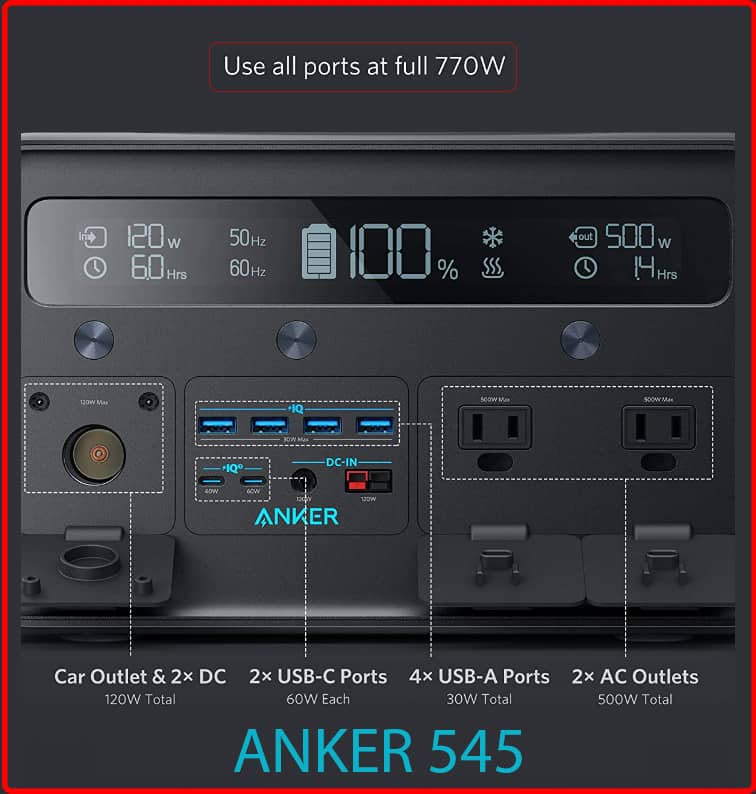
Despite its relatively small size and dimensions you can power up to 11 devices at the same time using the 2 AC outlets, 2 USB-C ports, 4 USB-A ports, one vehicle-class outlet, and 2 DC outlets, always keeping in mind the limitations of its maximum output (500W).
high speed charging to keep you powered up
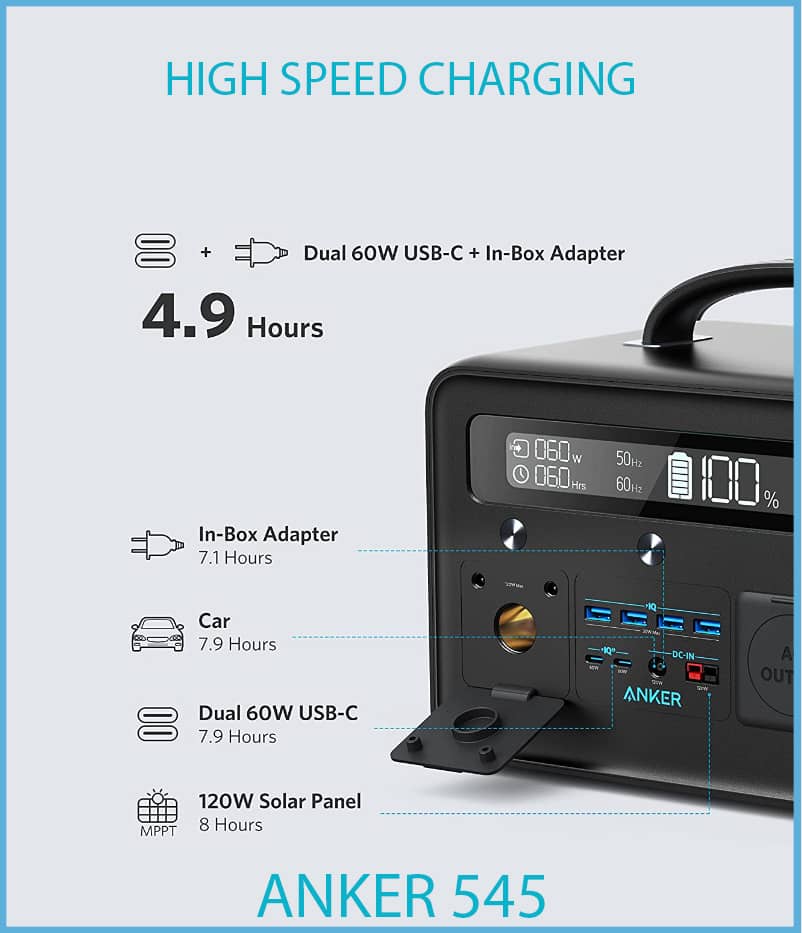
This model is fitted with a specialized Anderson port (DC 7909) which means it can work with most solar panels with a maximum of 120W input and, together with its MPPT (Maximum Point Point Tracking) Technology, you’ll get the best in recharging efficiency.
power for the Home and on the Go
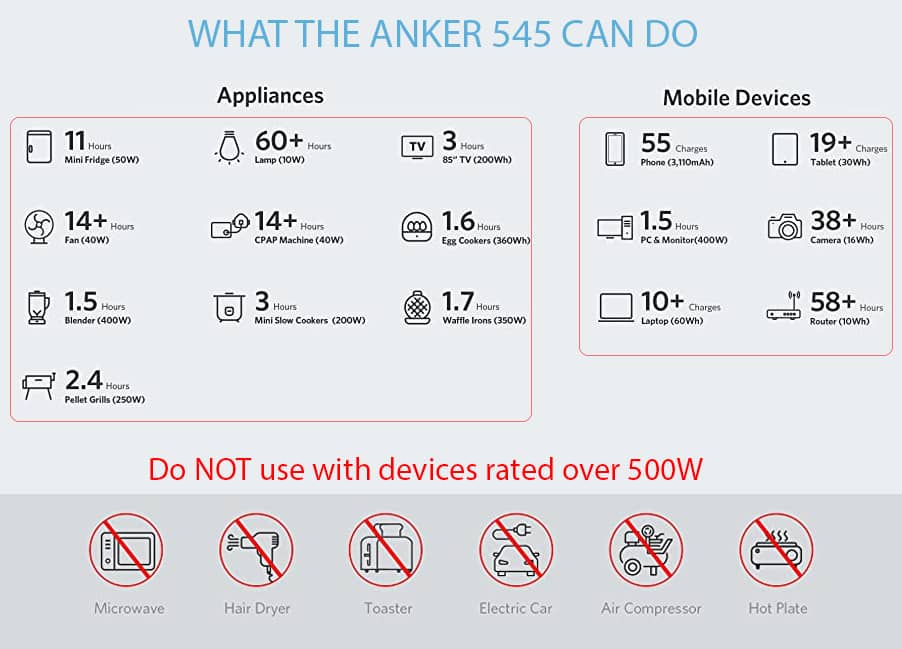
what you get in the box
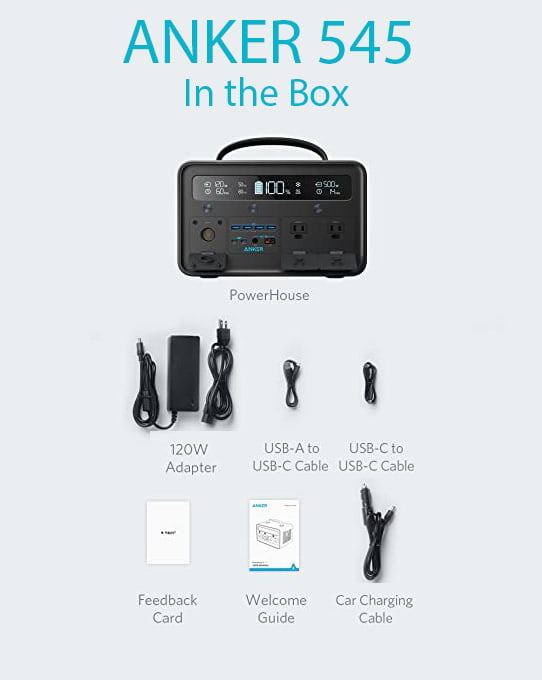
In the box you’ll find a 120W AC adapter, a USB-A to USB-C cable, a USB-C to USB-C cable, a car charging cable, a welcome guide, and a feedback card.
warranty
Along with lifetime technical support, Anker’s worry-free limited warranty for this model is 18 months, as can be confirmed from their warranty page which deals specifically with their line-up of power stations. The warranty is limited to the country of purchase and you’ll have to provide proof of purchase and confirmation of the address the item was originally shipped to.
Their is also a 30-day after purchase window during which you can return the power station for any reason provided it is undamaged, includes all the accessories and has the original packaging.
If we understand it correctly, the warranty is divided into two parts: quality-related issues and non-quality issues. In the case of a non-quality issue a full refund is made if all the conditions mentioned above are met. In the case of a quality-related issue Anker state that “items will be replaced with a factory refurbished model of equal value when available, otherwise, a new item will be sent. In situations where a replacement is not an available or preferred option, Anker will offer a partial refund according to the device’s usage time”.
Here is the User Manual (Welcome Guide) for this model, which as noted above could perhaps do with a little more attention.
Frequently Asked Questions
Anker PowerHouse II 800 Manufacturer Specifications
| Rated Capacity | 778Wh |
| Cell Capacity | 21,6000 mAh |
| AC Input Voltage | 100-120V~ 12A Max, 50Hz / 60Hz |
| Rated Watts | 500 Max |
| USB-C Input | 5V 3A/9V 3A/15V 3A/20V 3A (60W Max Per Port) |
| USB-C Output | 5V 3A/9V 3A/15V 3A/20V 3A (60W Max Per Port) |
| AC Output | 110V~ 4.54A, 50Hz/60Hz, 500W |
| USB-A Output | 5V 6A (2.4A Max Per Port) |
| Car Charger Output | 12V⎓10A (120W Max) |
| Operating Temperature | 32°F-104°F / 0°C-40°C |
| Charging Temperature | 32°F-104°F / 0°C-40°C |
| Size | 11.8 x 7.3 x 8 in |
| Weight | 18.3lbs 8.3kgs |





